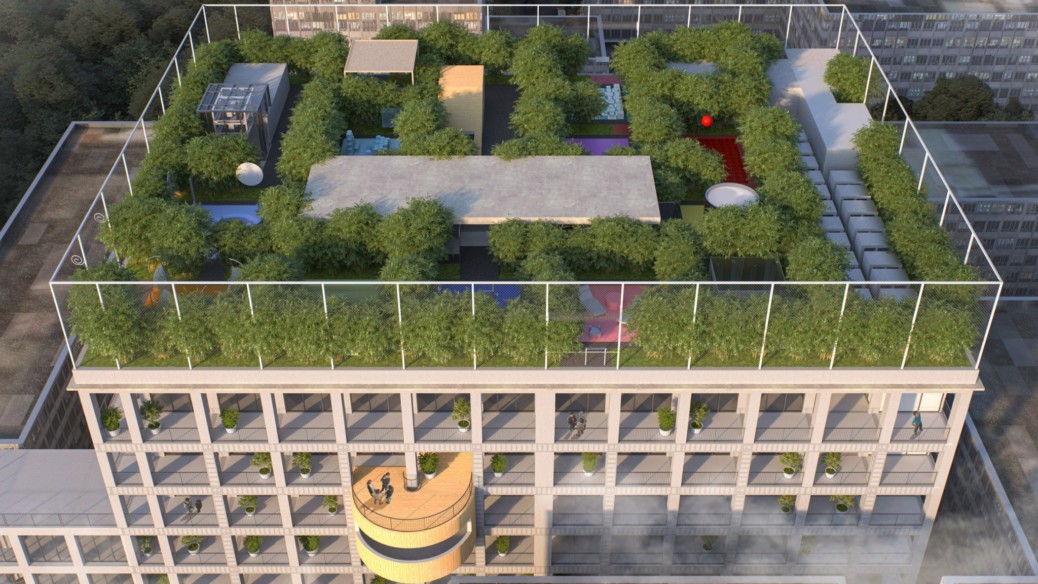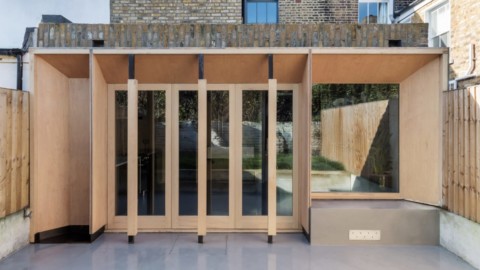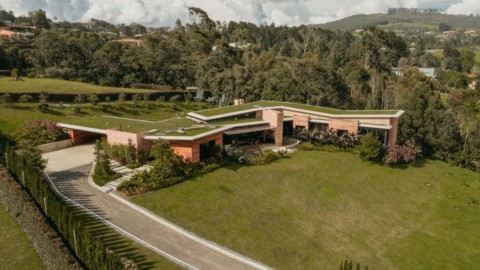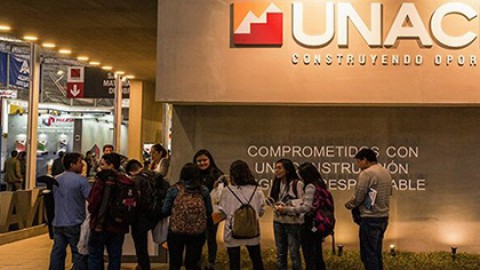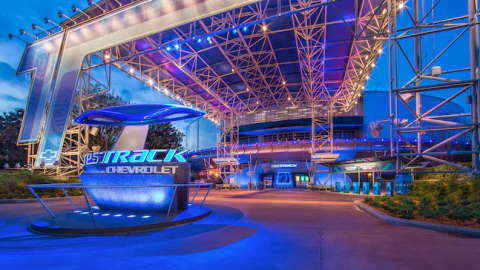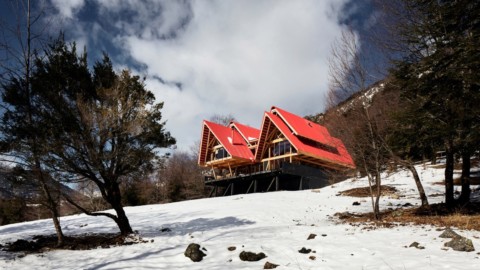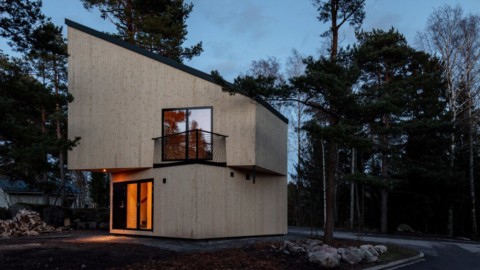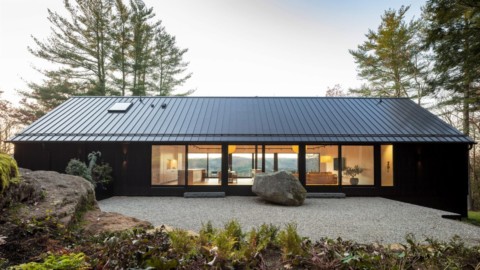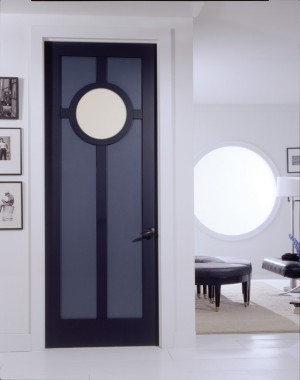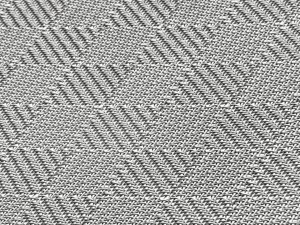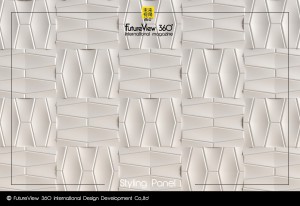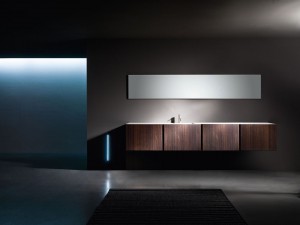Dutch architecture firm MVRDV has announced its plans to renovate a deteriorating concrete building in Shenzhen, China, to create the If Factory offices and a maze-like roof garden.
Located in the historic district of Nantou, the 11,000-square-metre disused factory will be transformed into rentable workspaces for creative companies and a home for the Urban Research Institute of property developer Vanke.
荷蘭建築公司MVRDV已宣布計劃翻新中國深圳一處惡化的混凝土建築,以創建If Factory辦公室和一個迷宮般的屋頂花園。
這座廢棄的工廠位於南投歷史悠久的地區,佔地11,000平方米,將被改造成可供創意公司租用的工作空間,並成為房地產開發商万科(Urban Research Institute)的房屋。
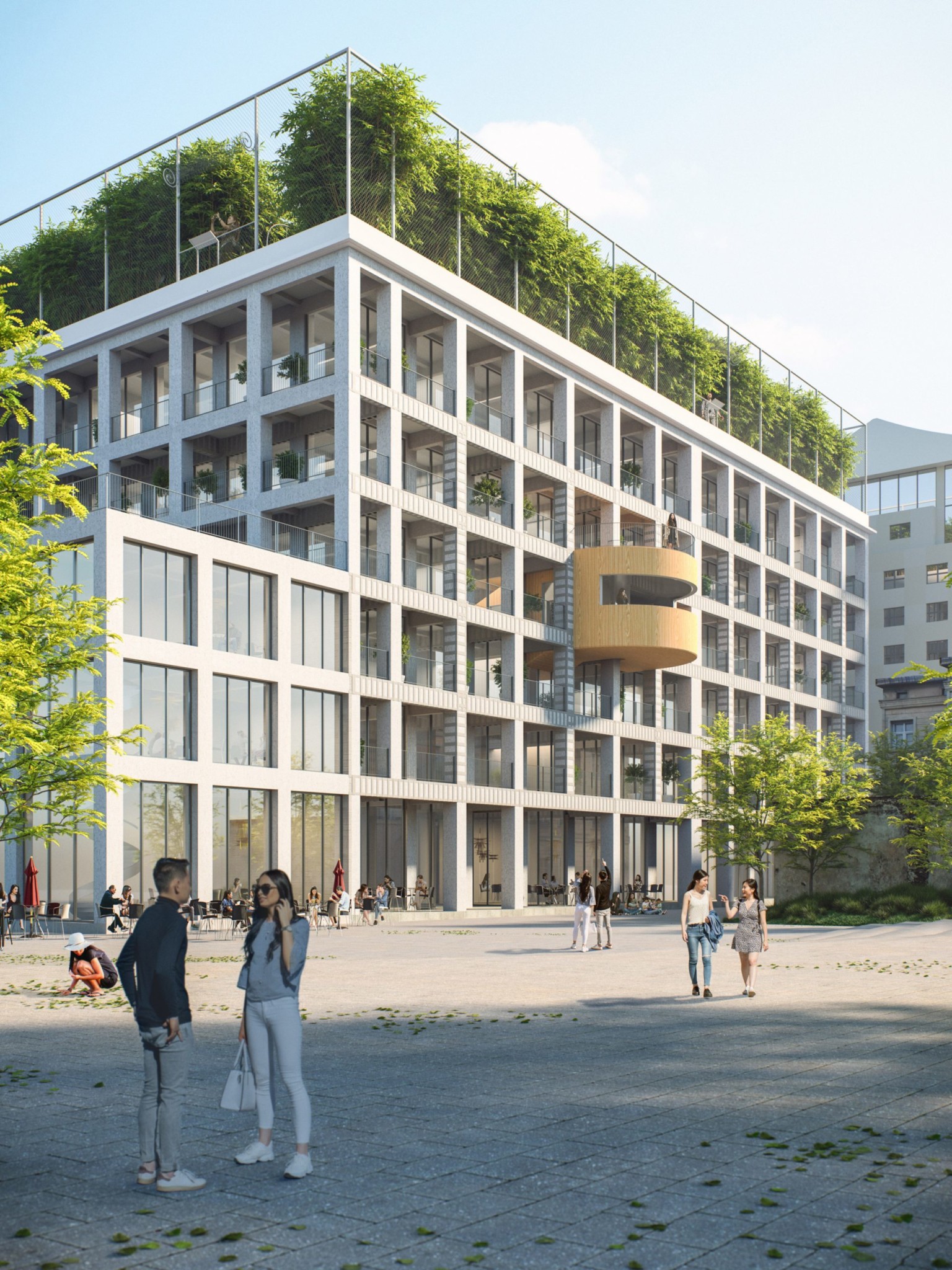
MVRDV has revealed its plans to renovate a disused factory in Shenzhen, China|MVRDV透露了翻新中國深圳一家廢棄工廠的計劃
Rather than demolishing the factory, MVRDV’s priority for the scheme is to preserve its history by restoring its original concrete frame, which has become exposed as the building has deteriorated.
The studio will then reconfigure its interior layout and insert a giant central staircase, before adding a rooftop garden called The Green House.
MVRDV計劃的重點是通過恢復其原始混凝土框架來保留其歷史,而該原始框架隨著建築物的惡化而暴露在外,而不是拆除工廠。
然後,工作室將重新配置其內部佈局,並插入巨大的中央樓梯,然後再添加一個名為“綠屋”的屋頂花園。
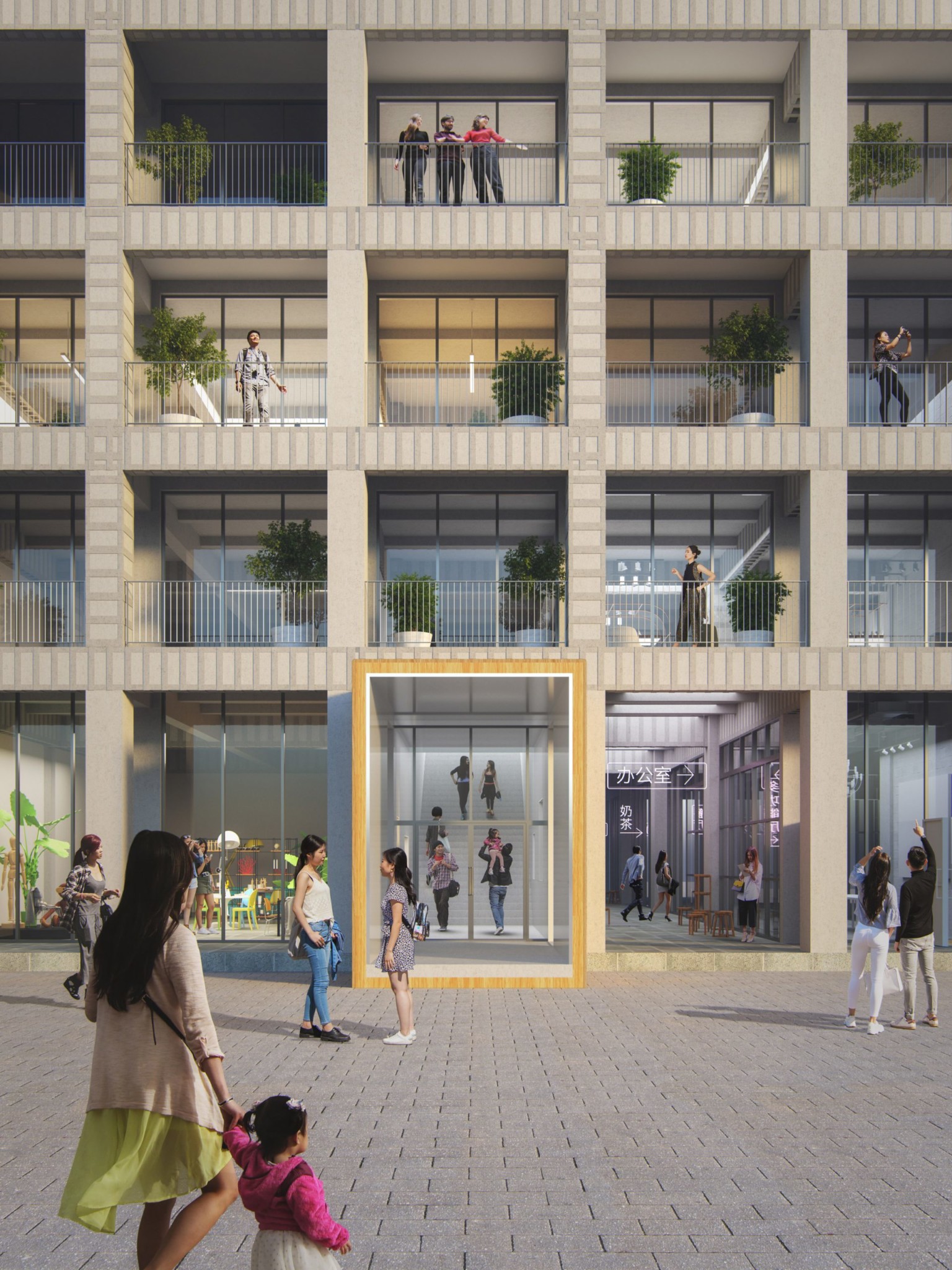
The building will be converted into a creative office block named If Factory|該建築將被轉換為名為If Factory的創意辦公大樓
Once complete, If Factory will be enveloped by the original building’s existing grid-like frame, which will be treated to resist ageing and punctured by large windows.
“This preserves the traces of the building’s history, keeping the concrete frame that is now exposed due to the building’s dilapidated state – in line with principles of sustainability and the circular economy,” explained the studio.
一旦完成,If Factory將被原始建築物的現有網格狀框架包圍,該框架將被抗拒老化並被大窗戶刺穿。
該工作室解釋說:“這保留了建築物的歷史痕跡,使由於建築物殘舊狀態而暴露的混凝土框架保持了可持續發展和循環經濟的原則。”
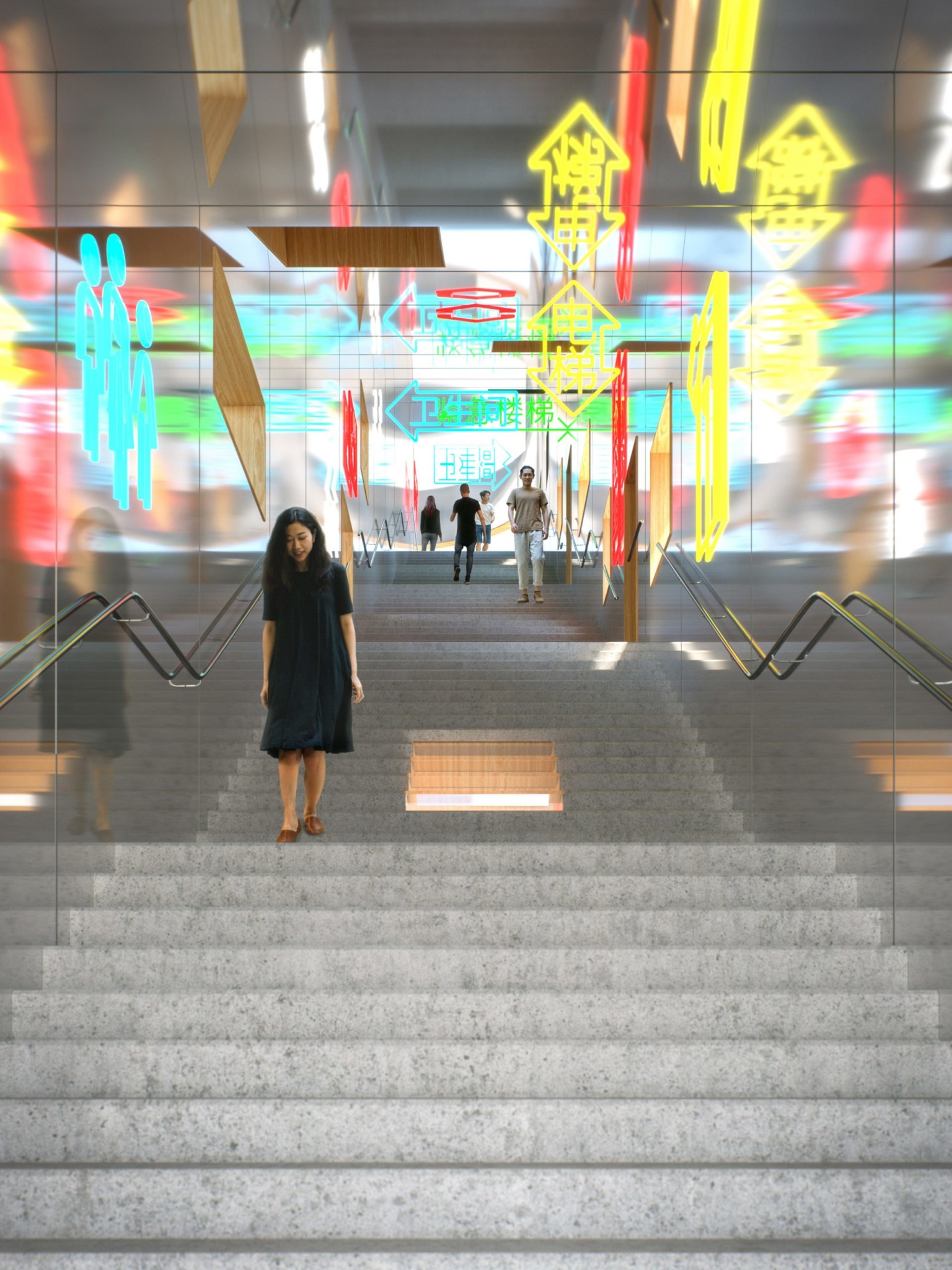
MVRDV will preserve the original structure and add a large staircase that leads to a roof garden|MVRDV將保留原始結構並增加一個通向屋頂花園的大樓梯
Inside, the office spaces will be set back from the concrete exterior to make space for balconies and circulation around the building’s perimeter.
This excludes the main staircase that MVRDV will build at the heart of the building to connect the ground floor to the rooftop.
在內部,辦公空間將從混凝土外部向後縮進,以為陽台和建築物周圍的流通空間提供空間。
這不包括MVRDV將在建築物中心建立的將底層連接到屋頂的主要樓梯。
Described by MVRDV as the “most notable new addition” to the building, the central staircase will protrude from the facade on the fourth floor and be clad in wood to contrast with the concrete-dominated material palette.
It will also be lined with windows that provide views into the office spaces and filled with neon signage to pay homage to Shenzhen.
MVRDV將其描述為建築物的“最引人注目的新建築”,中央樓梯將從四樓的立面突出,並以木質包裹,與以混凝土為主的材料調色板形成鮮明對比。
它還將襯有窗戶,可欣賞到辦公空間的景色,並充滿霓虹燈招牌,向深圳致敬。
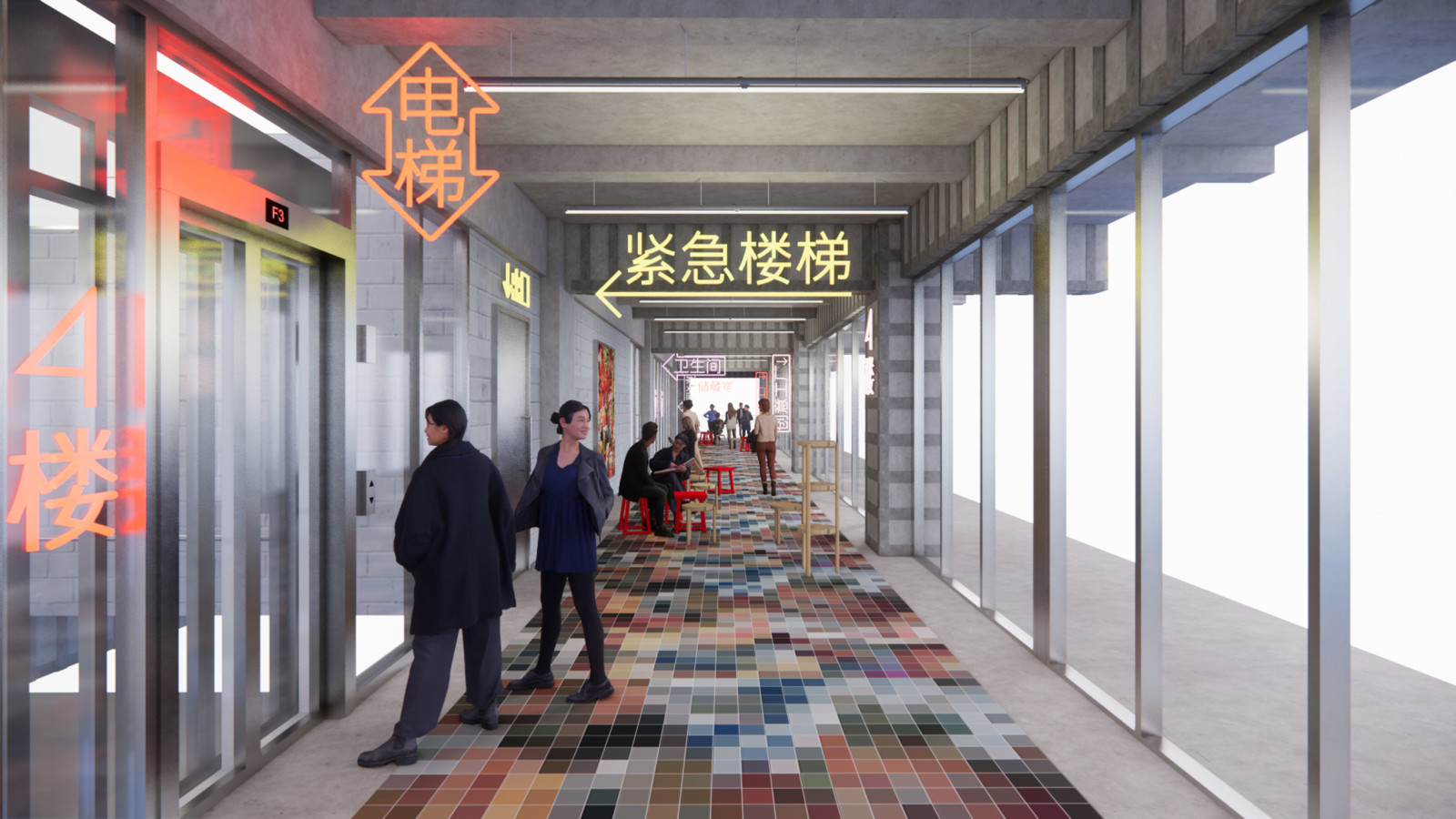
All other circulation will be placed around the building’s perimeter|所有其他循環將放置在建築物周圍
“Windows built into the staircase provide glimpses into the work being done in the offices, ensuring that this creative hub acts with transparency and remains connected to the community life of Nantou,” explained MVRDV.
“Inside the staircase, mirrored glass and vibrant neon signage offer an aesthetic reminder of the early days of Shenzhen’s urbanisation.”
MVRDV解釋說:“內置在樓梯中的窗戶讓人們瞥見了辦公室正在完成的工作,從而確保了這個具有創意的中心透明地運作,並與南投的社區生活保持了聯繫。”
“在樓梯內,鏡面玻璃和充滿活力的霓虹燈標牌讓人聯想起深圳城市化的早期。”
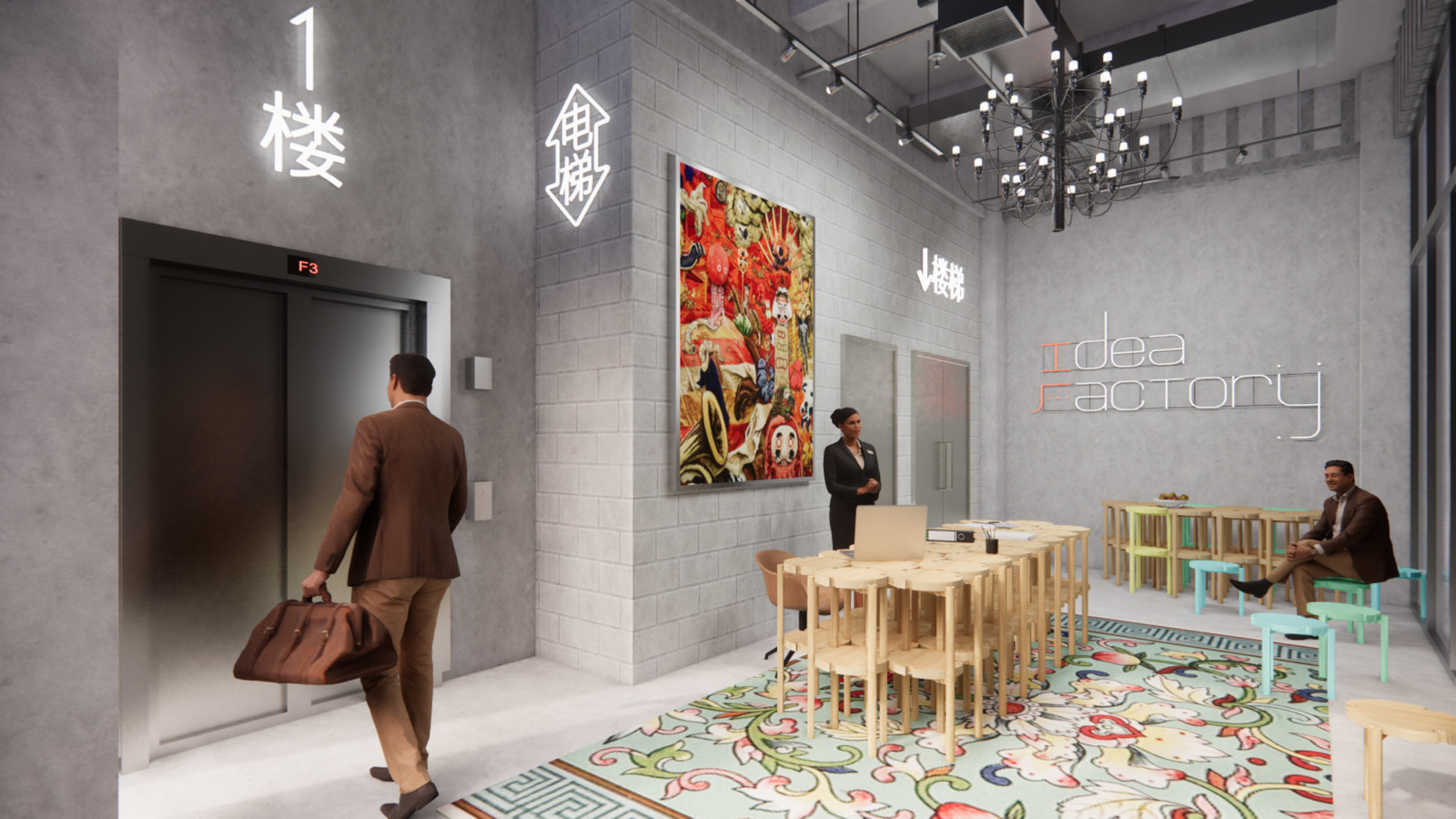
Some of the offices will be available to rent by creative companies|一些辦公室將由創意公司出租
Another key part of the If Factory is The Green House, a rooftop garden that will be lined with greenery and bamboo arranged like a maze.
Nestled within the network of paths and hedges will be The Green Rooms, a series of spaces for visitors to relax that are each focused on a different activity – ranging from dancing and exercising to reading, dining and gathering.
If Factory的另一個關鍵部分是The Green House,這是一個屋頂花園,周圍將綠樹成蔭,像迷宮一樣排列著竹子。
The Green Rooms坐落在小徑和籬笆的網絡中,這是一系列供遊客放鬆的空間,每個空間都專注於不同的活動-從跳舞,鍛煉到閱讀,用餐和聚會。
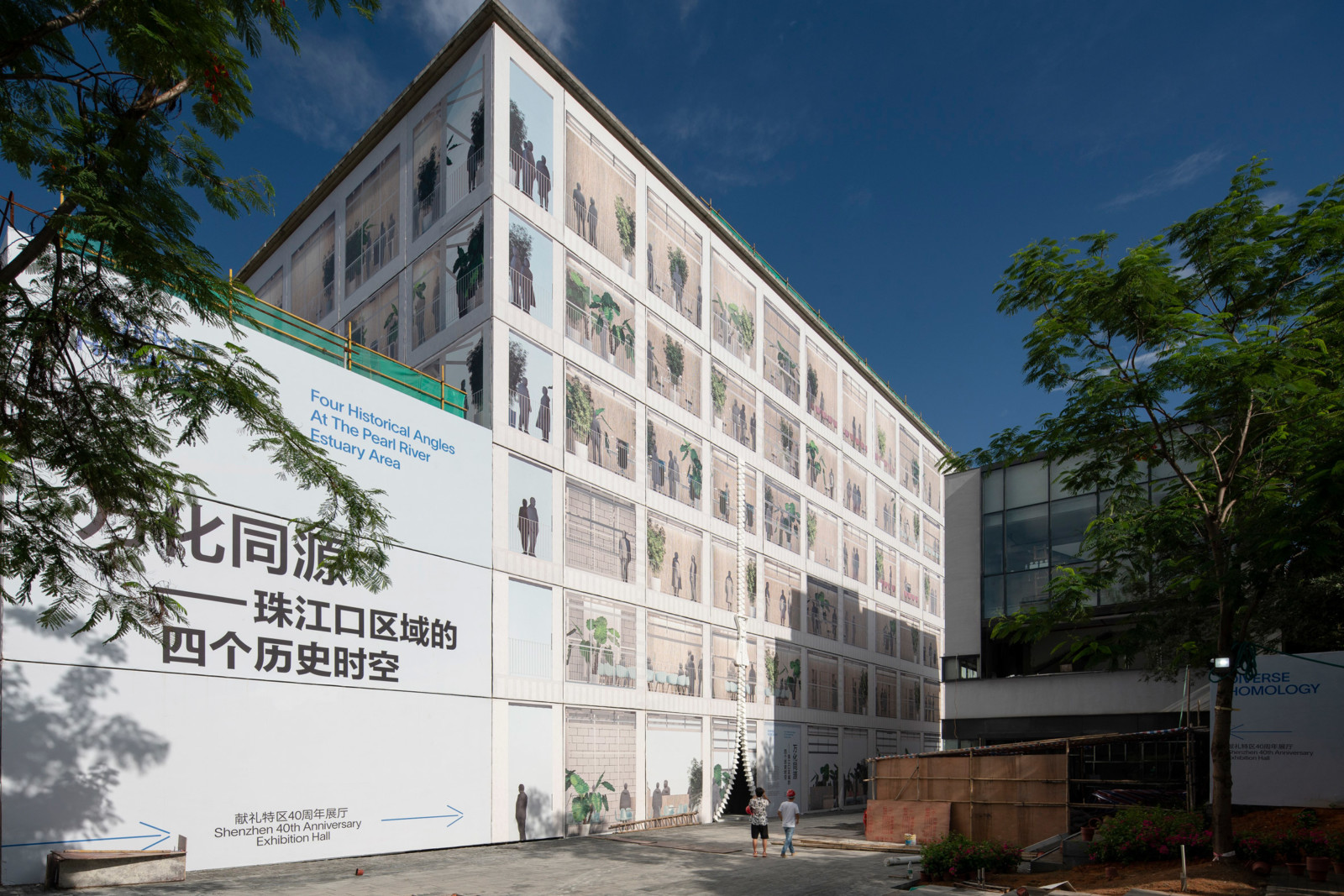
A temporary facade mimics the If Factory proposal is currently wrapped around the building|臨時立面模仿瞭如果工廠周圍正在包裹的工廠提案
It also marks the second time MVRDV has carried out a project within the factory, following its Vertical Villages exhibit at the 2017 Bi-City Biennale of Urbanism and Architecture.
“Nantou is a special and fascinating place,” said MVRDV founding partner Winy Maas. “It’s really rewarding to return to this building after we exhibited here during the Shenzhen Biennale in 2017 with our ‘Vertical Villages’ and ideas for the future of cities,” he continued.
“Our proposal draws on that ambition to make this part of Shenzhen a creative force, but it also remains in touch with the people of Nantou, their needs, and the history of the place.”
這也標誌著MVRDV在2017年城市與建築雙城雙年展的垂直村莊展覽之後第二次在工廠內開展項目。
MVRDV創始合夥人Winy Maas說:“南投是一個特別而迷人的地方。” 他繼續說:“在2017年深圳雙年展期間我們在這裡展出了我們的’垂直村莊’和關於城市未來的構想之後,重返這座建築真的很令人高興。”
他說:“我們的提議利用了使深圳這一部分具有創造力的雄心,但它也與南投人民,他們的需求和這個地方的歷史保持著聯繫。”
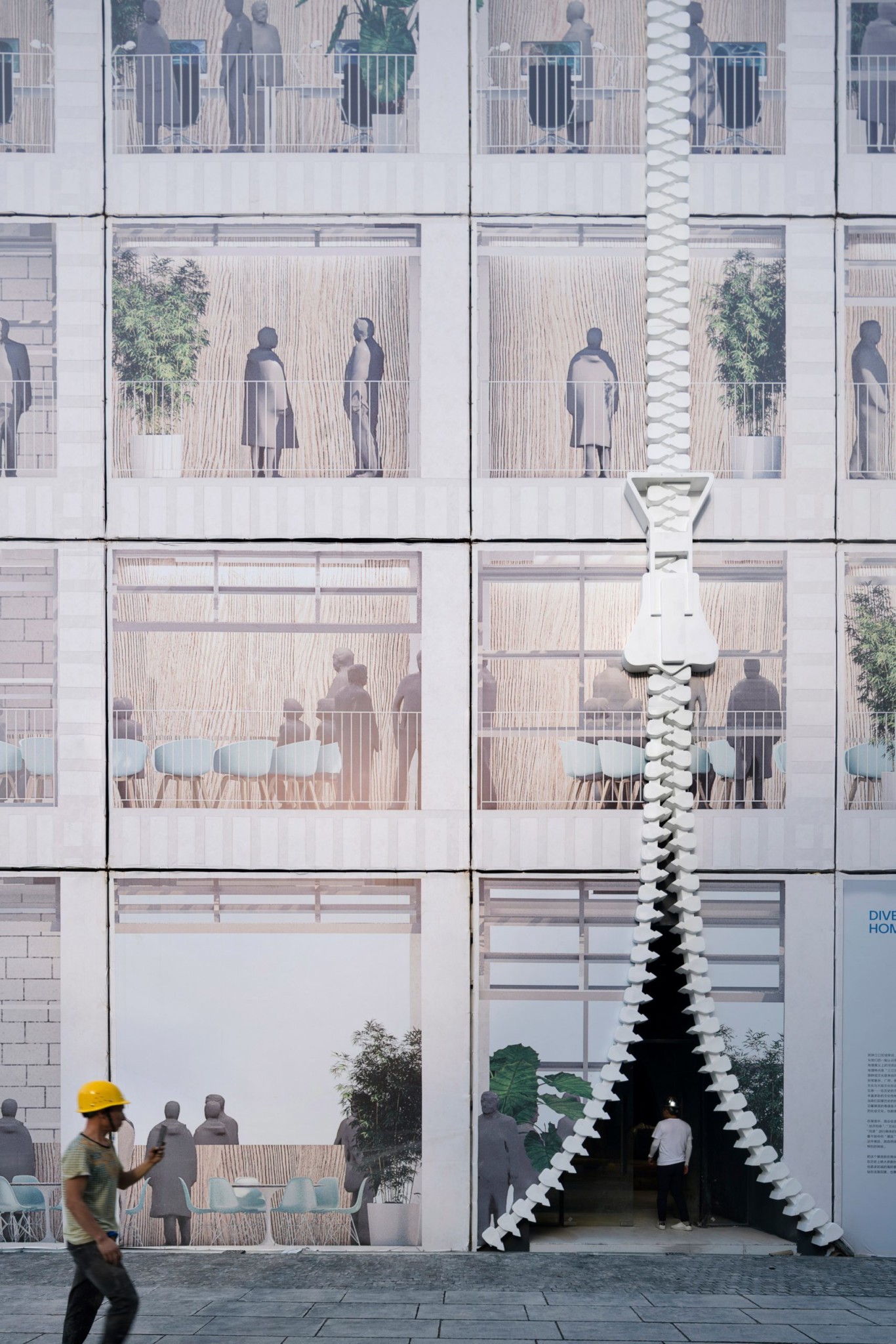
The canvas facade will be transformed into tote bags when the project is completed|項目完成後,帆布外立面將變成手提袋
If Factory was commissioned by the Shenzhen Nanshan District Bureau of Public Works and Chinese property developer Vanke. MVRDV has collaborated with the Urban Research Institute of Vanke, vaLue Design, and the Shenzhen Bowan Architecture Design Institute on its design.
It is one of a number of renovation projects proposed by Vanke in the city, which will all be developed by local and internationally renowned architects.
MVRDV is an architecture studio based in Rotterdam, founded in 1991 by Maas, Jacob van Rijs and Nathalie de Vries.
Elsewhere in Shenzhen, the studio is also developing an “urban living room” called Shenzhen Terraces as well as a 250-metre-tall skyscraper that was also commissioned by Vanke.
Visuals are courtesy of MVRDV and photography is by Gao Yu.
如果工廠受深圳市南山區公共工程局和中國房地產開發商万科委託。 MVRDV與万科城市研究所,vaLue Design和深圳博灣建築設計院合作進行了設計。
這是万科在城市中提出的眾多翻新項目之一,所有這些翻新項目都將由本地和國際知名建築師開發。
MVRDV是一家位於鹿特丹的建築工作室,由Maas,Jacob van Rijs和Nathalie de Vries於1991年成立。
該工作室還在深圳的其他地方開發了一個名為“深圳露台”的“城市客廳”,以及由万科委託的一座250米高的摩天大樓。
圖像由MVRDV提供,攝影由高宇提供。
Project credits
Architect: MVRDV
Founding partner in charge: Winy Maas
Partner: Wenchian Shi
Design team: Lorenzo Mattozzi, Guang Ruey Tan, Peter Chang, Cai Zheli, Echo Zhai, Pim Bangert, Elien Deceuninck, Daehee Suk, Monika Wiecha, Alberto Menozzi, Alexis Lode, Anamarija Vrzina, Enrica Perrot, Luca Beltrame, Michele Tavola and Hengwei Ji
Visualisations: Antonio Coco and Pavlos Ventouris
Director MVRDV Asia: Steven Smit
Strategy and development: Jammy Zhu
Project planning and design management: Urban Research Institute of China Vanke; vaLue Design
Co-architect: Shenzhen Bowan Architecture Design Institute
Landscape architect: Yuanye Landscape Design
Lighting designer: GD-Lighting Design
Facade consultant: PAG
Local interior architect: Biaogao Design
項目學分
建築師:MVRDV
負責創建的合作夥伴:Winy Maas
合作夥伴:施文賢
設計團隊:洛倫佐·馬托茲(Lorenzo Mattozzi),譚光瑞(Tuang Ruey Tan),彼得·張(Peter Chang),蔡哲理(Chai Zheli),翟,(Echo Zhai),皮姆·邦格特(Bim Bangert),埃利恩·德尤寧尼克(Elien Deceuninck),大熙(Daehee Suk),莫妮卡·維查(Monika Wiecha),阿爾貝托·梅諾茲(Alberto Menozzi),亞歷克西斯·洛德(Anaisja Vrzina),恩里卡·佩羅特(Enrica Perrot),盧卡·貝爾特拉姆(Luca Beltrame),米歇爾·塔沃拉(Michele Tavola)和亨威吉
可視化:Antonio Coco和Pavlos Ventouris
MVRDV亞洲總監:史蒂文·史密斯
戰略與發展:朱Jam
項目規劃與設計管理:中國万科城市研究所; 價值設計
聯合建築師:深圳市博灣建築設計研究院
景觀設計師:元業景觀設計
照明設計師:GD-Lighting Design
外觀顧問:PAG
本地室內設計師:標高設計
FROM:https://www.dezeen.com/2020/08/19/mvrdv-if-factory-offices-renovation/

